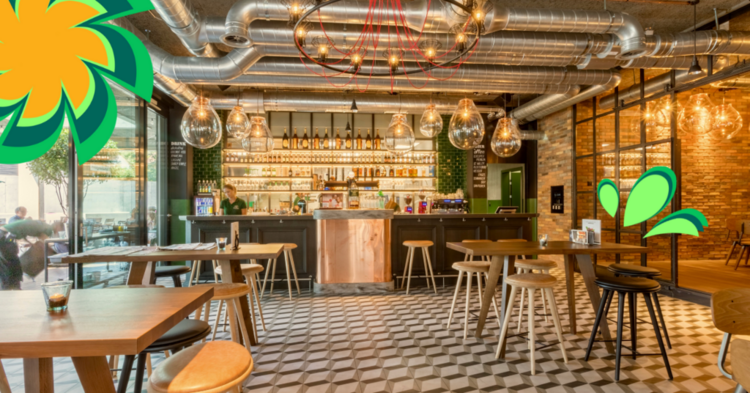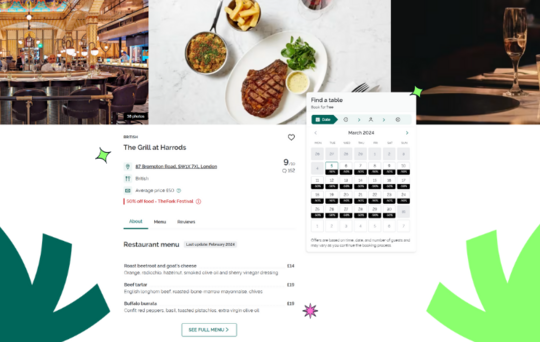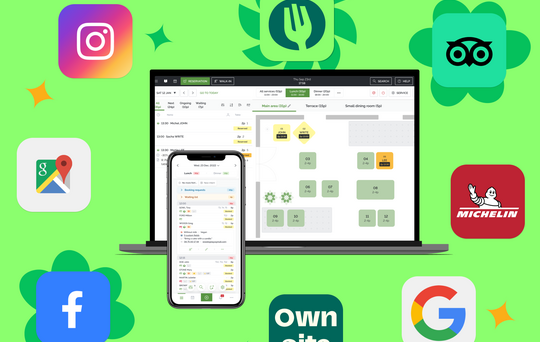How to rebrand your restaurant: Five tips from TheFork

Is there an industry more competitive than hospitality? Standing out and attracting customers is one of the most critical factors in the success of a restaurant. An old-fashioned or stale brand can put off new diners or worse – cause your loyal regulars to look elsewhere for something fresh and new.
This is where a rebrand comes in. A restaurant rebranding is not only enormously beneficial to attracting new diners, but also signals to customers that a new and exciting period for your restaurant is starting – and it’s a chance to develop and re-invent everything from the menu to the merchandise.
Here, we’ve suggested a few tips to get you started and ensure you are fully equipped to undertake a restaurant rebrand in 2025.
1. Choose the extent of the rebrand
A restaurant is more than just the food it serves. A rebrand can affect every public-facing part of your business or just a few specific details, it’s your decision. Obvious areas to rebrand are your signature colours, any logos or imagery, or even the restaurant’s name itself. But good brands are consistent – a cohesive and convincing visual update will need to be reflected on smaller things like menus, tableware, napkins, decor, marketing materials, uniforms and even any merchandise.
Many restaurants retain their menu and choose only to carry out a visual rebrand, especially if their main goal is to attract new diners. Other restaurants may revamp the menu only, although this is harder to communicate as a rebrand to potential customers. Sometimes a new sign or new brand colours are enough to catch the eye of hungry diners looking for somewhere new.
2. Modern or traditional?
What does “modern” or “traditional” mean in terms of brand design? The exact definition of each term is variable and subjective, but “modern” brand designs generally focus on one or two colours and a minimalist aesthetic, whereas “traditional” design leans more into classic brasserie and bistro dining – and can often add more authority, distinction, and prestige to an establishment.
The six unique bars and restaurants within The Londoner are a great example of modern, minimalist design – visible in menus, decor, and the hotel’s marketing materials. Conversely, Shezan, one of the oldest Indian restaurants in the UK, showcases its rich history through intricate interior design that fondly embraces tradition. Some restaurants prefer to blend modernity with classic design to create a unique restaurant perspective. Whichever direction you take, make sure it feels authentic and in line with the rest of your branding.
Try TheFork today
3. Get your customers involved
Fundamentally, a rebrand should serve your diners, so get them involved in the planning phase wherever you can. Firstly, consider feedback they’ve already given you through reviews and social media comments. If there’s a repeated gripe or suggestion that frequently comes up — such as a menu not catering well for vegetarians or your restaurant being too dark and loud — think about how you can address that in a rebrand.
You may even want to involve customers directly via social media. Instagram especially can be a great forum for feedback — you can add options for new menu items or colour schemes to your Stories and create polls to hear directly from your followers. Not only will these insights be invaluable to your planning, but it also creates an opportunity to engage your customers and reinforce a sense of community with your diners.
4. Keep your restaurant’s DNA
A rebrand can be a powerful marketing move to transform your restaurant’s perception and drive brand awareness. But you’ll be wasting your efforts if you don’t retain the heart of what your restaurant is all about. By rebranding your restaurant, you should be enhancing and elevating your current image — not destroying it. If your new brand feels unrecognisable compared to your existing brand, you risk alienating your current loyal customers.
Instead, focus on what diners love about your restaurant in your early rebranding discussions. Is it a family feel within the restaurant? Is it the way you fuse together different cuisines through your menu? Identify your unique perspective and think about new ways you can present this to satisfy existing customers while charming new diners.
5. Communicate it clearly
Without proper communication, a big rebrand has the potential to be confusing for diners. Use every possible touchpoint to spread the news about what’s changed in your restaurant and, more importantly, why customers should be excited to pay you a visit soon. You could even give customers on your mailing list or those following your social channels an exclusive preview of the changes before you set them live on your website and TheFork listing.
You’ve also got the chance to offer special deals and experiences to celebrate your rebrand. You could position it as a ‘relaunch’ and offer a special dining deal — such as a free drink or 10% off the bill — for the first diners to pay a visit that weekend. Not only will diners always be tempted by a good deal, but by giving them the first glimpse of your rebranded restaurant you’ll create a sense of exclusivity that makes them feel ‘in the know’.
Once you’re done with your rebrand, it’s time to get more diners through the doors. Find out how you can increase your bookings and drive more revenue with TheFork by contacting our team.















